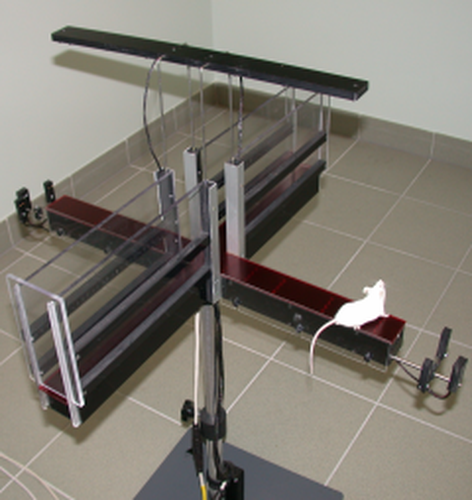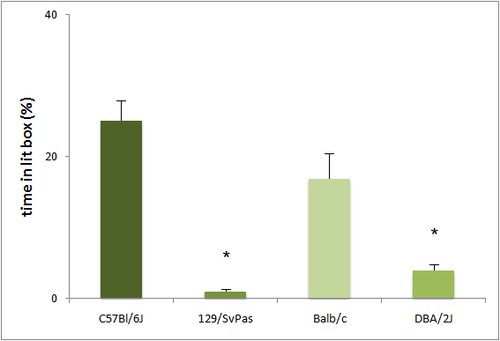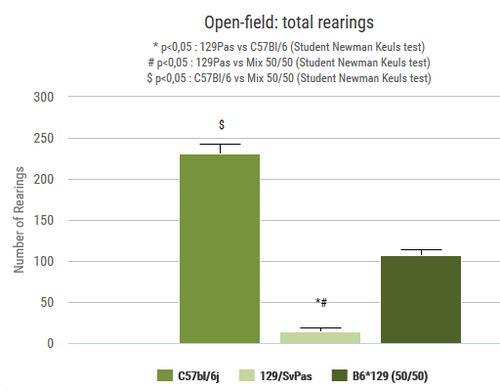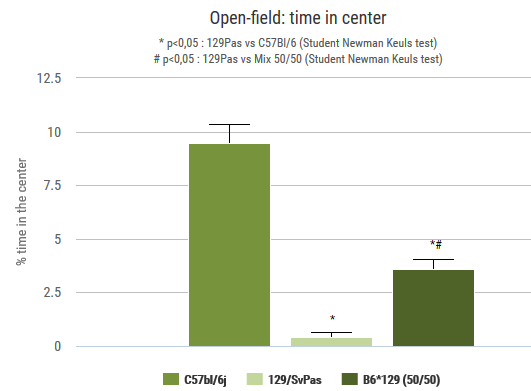
I agree Our site saves small pieces of text information (cookies) on your device in order to deliver better content and for statistical purposes. You can disable the usage of cookies by changing the settings of your browser. By browsing our website without changing the browser settings you grant us permission to store that information on your device.
Schizophrenia is a chronic and severe mental disorder that affects feelings, thoughts and behavior. Clinical depression and anxiety can be debilitating disorders suffered separately or encountered in the course of schizophrenia. They may compromise social interactions, and they are associated with an increased risk of self-harm and suicide.
The startle is a reflexive response to strong exteroceptive stimuli (acoustic or tactile). Pre-pulse inhibition (PPI) is the normal reduction of the startle reflex to an intense stimulus (acoustic or tactile) when this stimulus is immediately preceded by a non-startling prepulse. PPI provides an operational measure of sensorimotor gating which reflects the ability of an organism to properly inhibit sensory information. Amplitude of startle might give indication about motor deficits or anxiety. This assay could also be used to analyze depression-like behavior.
Eight startle chambers (SRLAB, San Diego Instruments, San Diego, CA) are used for evaluation of the acoustic or tactile startle.
10 mice per group are recommended for reliable data analysis.
The startle reflex is a ubiquitous, cross-species integrated reflexive response to strong exteroceptive stimuli. Prepulse inhibition (PPI) is the normal reduction of the startle reflex to an intense stimulus (acoustic or tactile) when this stimulus is immediately preceded by a non-startling prepulse (auditory, visual or tactile stimuli). PPI phenomenon is viewed as an operational measure of sensorimotor gating, which reflects a basic inhibitory process that regulates sensory input to the brain and allows the early stage of information processing to occur without disruption. Deficits in PPI have been observed in several neuropsychiatric disorders characterized by a loss of normal ability to filter or gate intrusive or irrelevant sensory, motor or cognitive information such as schizophrenia, obsessive-compulsive disorder and Huntington’s disease. With the present procedure, various protocols are used in which stimuli of different modalities and duration (acoustic, tactile and visual) are used alone or in combination in order to assess startle respones and cross-modal prepulse inhibition of startle reflex.
The elevated plus maze test allows an evaluation of anxiety for height. Animals are confronted to a choice between threatening environment, an exposed runway elevated from the floor, and relatively safe enclosure. An anxious animal will normally choose to spend time in the closed arms and rarely venture out onto the open arms.

An automated elevated maze device (Imetronic, Pessac, France).
10 mice per group are recommended for reliable data analysis.
In the forced swim procedure, mice are forced to swim in unescapable situation. After a period of vigorous struggling, the animal becomes immobile, or makes only those movements necessary to keep its head above the water. The immobility observed in this test is considered to reflect a state of despair.
Glass beakers filled with water at 22-23 °C.
10 mice per group are recommended for reliable data analysis.
The light-dark test allow an evaluation of emotional responses of animals in a highly illuminated situation. Mice will normally show a preference for the dark compartment, but they also exhibit some incursions into the lit compartment. Aberrant behavior may indicate changes in anxiety.

4 automated light/dark boxes (Imetronic, Pessac, France).
10 mice per group are recommended for reliable data analysis.
This test is used to evaluate exploratory drive, reactivity to novelty and emotionality. Habituation to the open field, which is a form of non-associative learning, is also measured.


4-8 automated openfield arenas (Panlab, Barcelona, Spain).
10 mice per group are recommended for reliable data analysis.
See our Anatomopathology dedicated page to explore all our available tests.
See our Gene expression analysis dedicated page to explore our different related tests.
Anhedonia, or reduced sensitivity to pleasure, is one of the core symptoms of depression which can be modeled in animals. The hedonic behavior can be evaluated by measuring the preference for sucrose when the animal has free access to two bottles containing either a sucrose solution or water.
Specific bottles for evaluation of liquid consumption.
10 mice per group are recommended for reliable data analysis
The tail suspension test is among the most widely utilized rodent model of depression. When mice are suspended by the tail to a tail hanger, they will normally undertake an initial period of vigorous struggling after which the animal gradually abates into immobility. The duration of immobility has been inferred as an index of behavioral despair.
2 automated cages are used (MED Associates Inc, St Albans, Vermont).
10 mice per group are recommended for reliable data analysis.
See our In vivo Viral Transduction dedicated page to explore our frequently used vectors and delivery modes including stereotactic admininistration (intraventricular and cerebellar)
With several months notice, we can procure and provide a variety of different restriction diets for nutritional analyses in conjuction with our other analyses.
With several months notice, we can procure and provide a variety of different restriction diets for nutritional analyses in conjuction with our other analyses.
See our In vivo Viral Transduction dedicated page to explore our frequently used vectors and delivery modes including stereotactic admininistration (intraventricular and cerebellar)